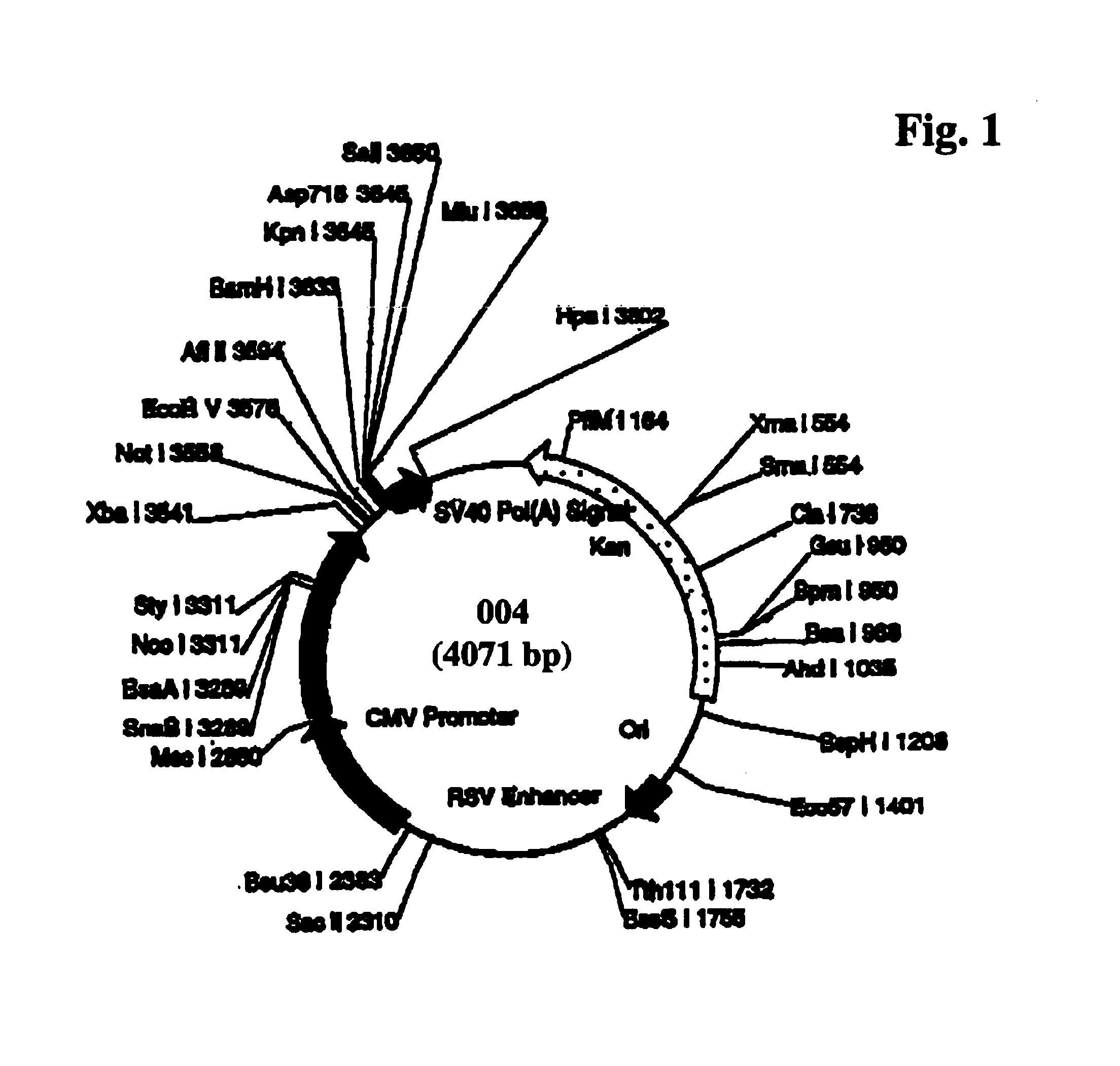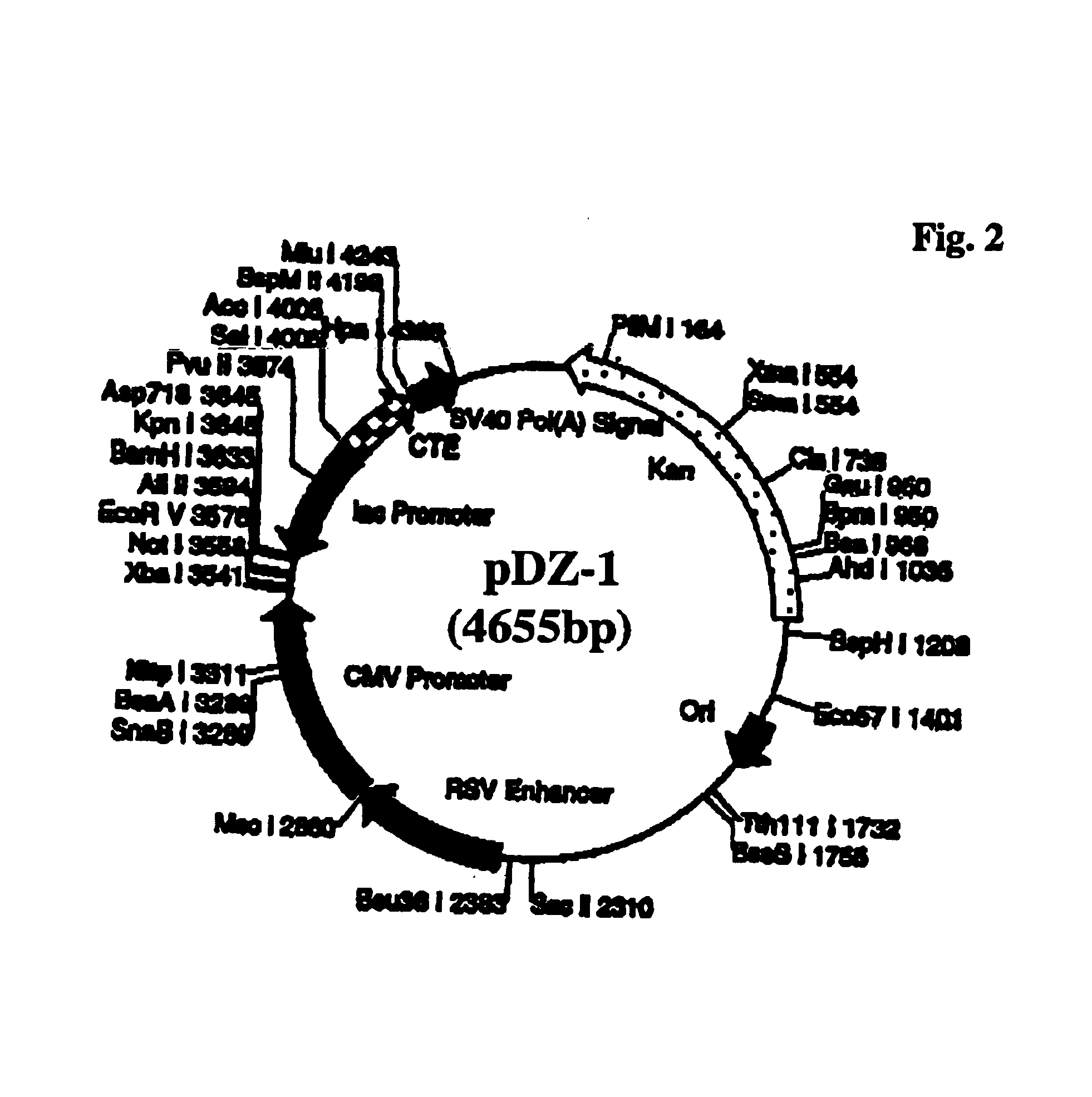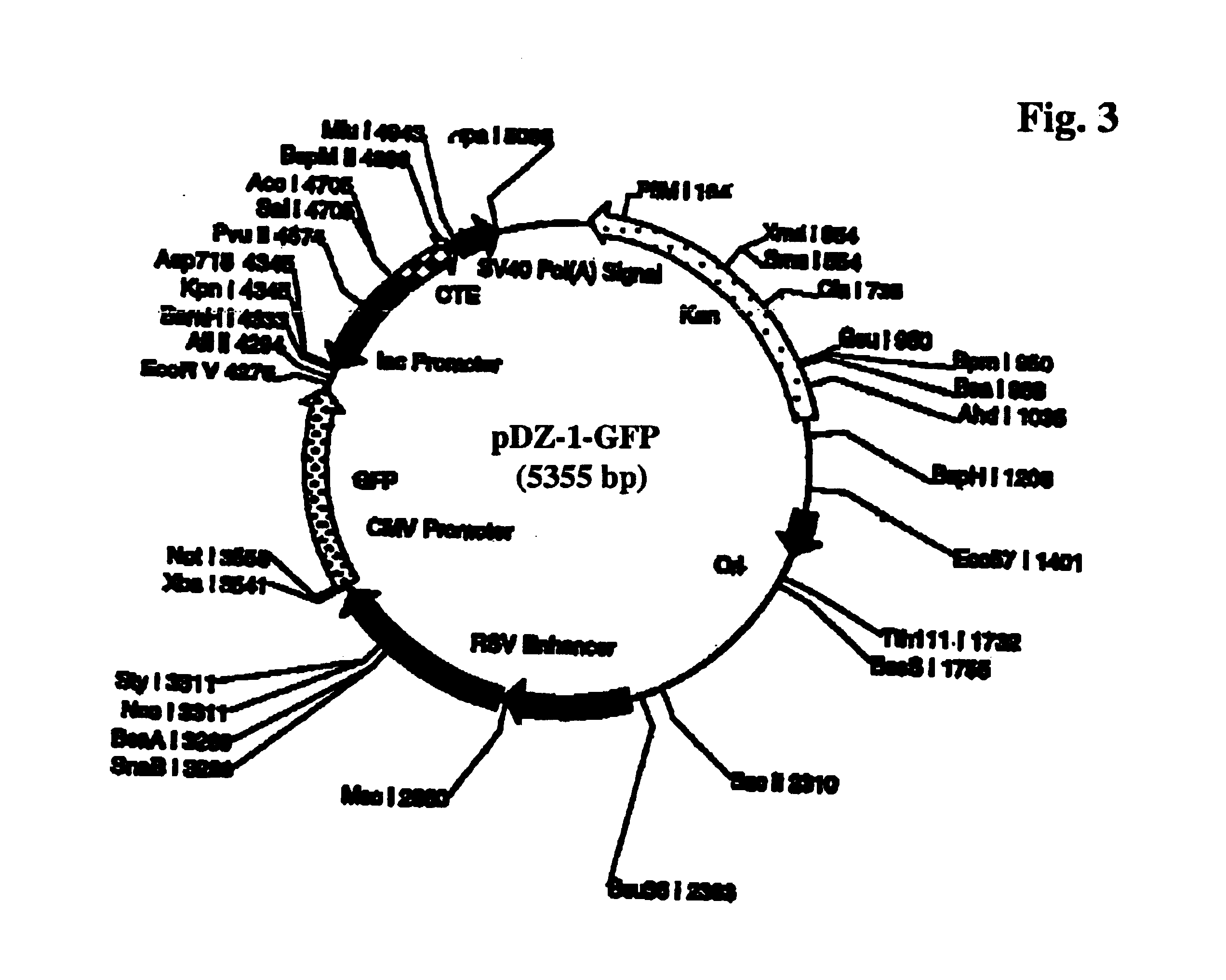Expression system for cloning toxic genes
- Summary
- Abstract
- Description
- Claims
- Application Information
AI Technical Summary
Problems solved by technology
Method used
Image
Examples
example 1
Preparation of pDZ-1 and pDZ-1-GFP
[0029]The plasmid pDZ-1 was prepared by using plasmid 004 (see FIG. 1) as the starting vector. The lac promoter was obtained by PCR from the pCRII plasmid and digesting the PCR product with SalI and XbaI. Plasmid 004 was also digested with SalI and XbaI and the digested lac promoter PCR product was ligated into the plasmid to produce pDZ-1 (see FIG. 2). For pDZ-1-GFP (see FIG. 3), the green fluorescent protein was sub-cloned from pGreenLantern-1. Expression of pDZ-1-GFP was observed under ultraviolet light (not shown). Table 1 shows several HIV-1 env gene constructs that have been prepared in accordance with the claimed invention along with the percentage of positive clones.
[0030]
TABLE 1ConstructClade% positive2424C10 / 18dj264A 9 / 112430C15 / 162438A7 / 92425C15 / 182428E 2 / 163095G2 / 23096G6 / 83112D7 / 8
PUM
| Property | Measurement | Unit |
|---|---|---|
| Fraction | aaaaa | aaaaa |
| Fraction | aaaaa | aaaaa |
| Toxicity | aaaaa | aaaaa |
Abstract
Description
Claims
Application Information
 Login to View More
Login to View More - R&D
- Intellectual Property
- Life Sciences
- Materials
- Tech Scout
- Unparalleled Data Quality
- Higher Quality Content
- 60% Fewer Hallucinations
Browse by: Latest US Patents, China's latest patents, Technical Efficacy Thesaurus, Application Domain, Technology Topic, Popular Technical Reports.
© 2025 PatSnap. All rights reserved.Legal|Privacy policy|Modern Slavery Act Transparency Statement|Sitemap|About US| Contact US: help@patsnap.com



